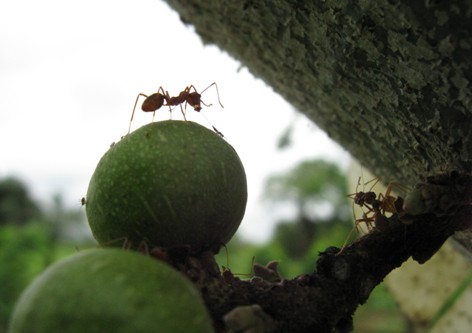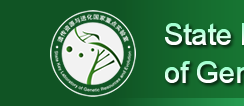Ants play critical roles in plant protection in ecosystem by acting as predators and taking herbivores, such as parasites, as their prey items. In this predator-herbivore-plant scenario, the density or behavior of herbivore is disturbed by the predator, and thereafter, the biomass of plant is indirectly increased. This cascade is called “trophic cascade”.
Through a three-month survey (from May to August, 2012) conducted in Xishangbanna by Dr. WANG Ruiwu (Kunming Institute of Zoology, CAS) and his colleagues, a trophic cascade induced by predatory ants (the weaver ant, Oecophylla smaragdina) in a fig-fig wasp mutualism has been depicted.
In the mutualisms of fig-fig wasps, fig attracts pollinating wasps to lay eggs into flower ovaries and to return the favor of providing shelters to their larvae, the pollinating wasps are quite helpful in dispersing pollens and promoting seed yields of fig. However, at a specific stage of fig maturation, the non-pollinating wasps oviposit from the outer surface of the fig to compete with the pollinating wasps, which is harmful to the fig.
In this study, Dr. WANG found that the weaver ants, which are throughout most of Asia and is the most common dominant species habitats in fig tree Ficus racemosa in Xishangbanna, captured more non-pollinating wasps than pollinators as the insects arrived to lay eggs. When ants were excluded, more non-pollinators laid eggs into figs and fewer pollinators entered figs. Furthermore, trees with weaver ants produced more pollinator offspring and fewer non-pollinator offspring, shifting the community structure significantly. In addition, F. racemosa produced significantly more seeds on trees inhabited by weaver ants.
“Our results indicate that predation is a key functional factor that can shape the community structure of a pollinator-plant mutualistic system”, according to Dr. WANG.
This study has shed lights into the prediction of biodiversity and the strategies of insects bio-controlling. The details could be found in Journal of Animal Ecology (http://onlinelibrary.wiley.com/doi/10.1111/1365-2656.12219/abstract).






